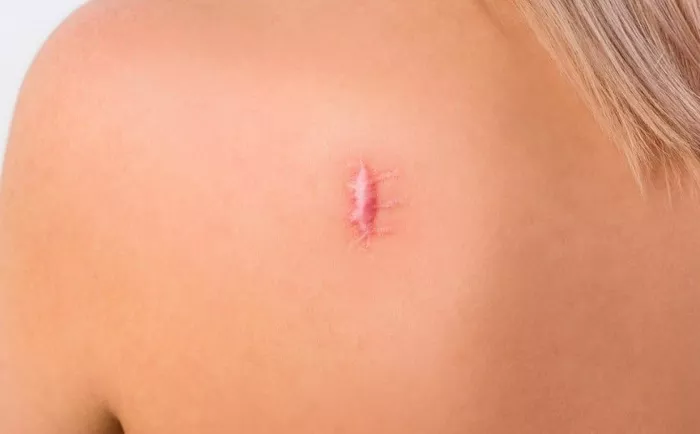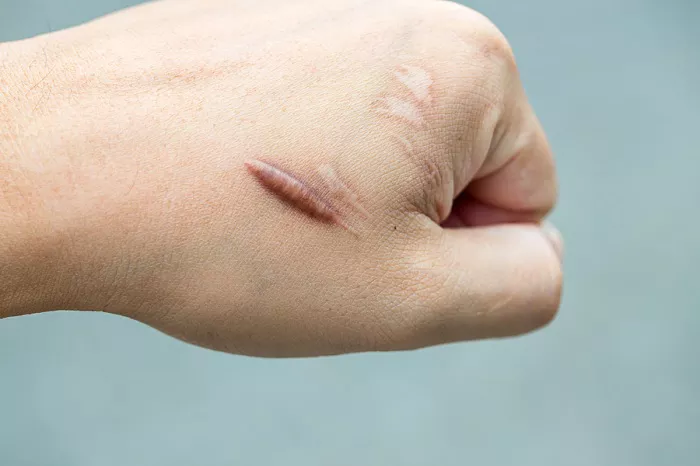Keloids. These raised, thickened scars can be a source of distress for many individuals. While they may not pose a serious health risk, their appearance and potential discomfort can significantly impact one’s quality of life. In this article, we will explore the various treatment options available for keloids and aim to answer the burning question: What is the best treatment for keloids?
What Are Keloids?
Before delving into treatment options, it’s crucial to understand what keloids are. Keloids are a type of scar that occurs when the body’s natural healing process goes awry. Unlike normal scars, which tend to fade over time, keloids extend beyond the boundaries of the original injury. These overgrown scars are characterized by their raised, firm texture and can be itchy or painful.
The Complexity of Keloid Formation
To determine the best treatment for keloids, it’s essential to comprehend the complexities of how they form. Keloids develop when collagen, a protein responsible for skin structure, accumulates excessively during the healing process. This collagen overproduction leads to the raised and often discolored appearance of keloids.
Medical Management of Keloids
Now that we have a better understanding of keloids, let’s explore the various treatment options available, starting with medical management.
1. Steroid Injections for Keloids
One of the most common medical treatments for keloids is steroid injections. Steroids, such as triamcinolone, are injected directly into the keloid. These injections help reduce inflammation and inhibit collagen production, leading to flattening and softening of the keloid. While steroid injections can be effective, multiple sessions are often required.
2. Pressure Dressings and Silicone Gel Sheets for Keloids
Another approach to managing keloids is the use of pressure dressings and silicone gel sheets. These products are designed to apply constant pressure to the keloid, flattening it over time. Silicone gel sheets can also hydrate the scar tissue and improve its texture and appearance. This treatment option is non-invasive and well-tolerated by many patients.
3. Cryotherapy and Keloids
Cryotherapy involves freezing the keloid with liquid nitrogen. This process can reduce the size of the keloid and alleviate symptoms like itching and pain. However, cryotherapy may not be suitable for all keloids, and multiple sessions may be necessary for significant improvement.
4. Laser Therapy for Keloids
Laser therapy is another option for keloid treatment. Various types of lasers, such as pulsed dye lasers and fractional lasers, can be used to target the blood vessels that supply the keloid. This reduces redness and can help flatten the scar. Laser therapy is generally considered safe but may require multiple sessions.
Surgical Interventions for Keloids
In some cases, surgical interventions may be considered for keloids. However, surgery should be approached with caution, as it can potentially trigger more keloid formation.
5. Keloid Excision with Radiation Therapy
Keloid excision involves surgically removing the keloid and then following up with radiation therapy to prevent recurrence. Radiation therapy helps reduce collagen production at the surgical site. This combination approach can be effective but is typically reserved for large or recurrent keloids.
6. Laser Resurfacing and Keloid Surgery
Laser resurfacing can be used in conjunction with keloid surgery to improve the appearance of the scar. After the keloid is excised, laser therapy can help smoothen the skin and minimize scarring. This approach is often considered for cosmetic reasons.
Emerging and Alternative Treatments for Keloids
As research in the field of keloid treatment continues to advance, several emerging and alternative treatments are being explored.
7. Corticosteroid Implants
In addition to traditional steroid injections, corticosteroid implants are a newer option. These small implants are placed under the skin and slowly release steroids over time, providing a continuous therapeutic effect.
8. Interferon Therapy for Keloids
Interferons are proteins that play a role in regulating the immune system. Interferon therapy involves injecting these proteins directly into the keloid to modulate the immune response and reduce collagen production. While promising, further research is needed to establish its long-term efficacy.
Combination Approaches for Keloid Treatment
In many cases, a combination of treatments may be the most effective approach for keloid management.
9. Combining Steroid Injections with Silicone Sheets
Combining steroid injections with the use of silicone gel sheets can provide both anti-inflammatory and pressure-based benefits. This combination may lead to more significant improvements in keloid appearance and symptoms.
10.Surgical Excision Followed by Non-Surgical Therapies
After surgically removing a keloid, non-surgical therapies like steroid injections or silicone sheets can be employed to prevent recurrence and improve the scar’s aesthetic qualities.
Preventing Keloid Formation
While treating existing keloids is essential, preventing their formation in the first place is equally important, especially for individuals at higher risk.
Wound Care and Early Intervention
Proper wound care and early intervention are crucial steps in preventing keloid formation. Keeping wounds clean, moist, and protected can help minimize the risk of excessive scarring.
Topical Silicone Gel for Scar Prevention
For individuals prone to keloids, the use of topical silicone gel immediately after wound closure can reduce the likelihood of keloid formation.
Conclusion
In the quest to find the best treatment for keloids, it’s important to consider the unique characteristics of each keloid and the patient’s individual preferences and circumstances. Medical management options like steroid injections and pressure dressings can be effective for many patients, while surgical interventions may be necessary in specific cases. Emerging treatments and combination approaches offer hope for continued advancements in keloid management. Ultimately, the choice of treatment should be made in consultation with a healthcare provider who can tailor the approach to the individual’s needs and goals.
Keloids, while challenging, are not insurmountable. With the right treatment plan and ongoing care, individuals can regain confidence and comfort, taking control of their keloid journey.
[inline_related_posts title=”You Might Be Interested In” title_align=”left” style=”list” number=”6″ align=”none” ids=”2615,2734,2730″ by=”categories” orderby=”rand” order=”DESC” hide_thumb=”no” thumb_right=”no” views=”no” date=”yes” grid_columns=”2″ post_type=”” tax=””]


































